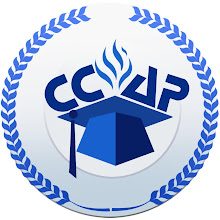By Richard Vedder
CCAP is a new and very small think tank, but what it lacks in resources it makes up in enthusiasm, and there are so many problems in American higher education worth investigating. From several perspectives (economics, ethics,optimal public policy) one of the biggest problems is how research oriented universities spend their money, and whether undergraduate education is really subsidized by endowment monies, state government appropriations, and private gifts, as is claimed, or whether something closer to the reverse is true --undergraduates are the "cash cow" that provide some funds to do what are considered in the university community more important things than the mundane job of training our next generation to lead.
To get some insight into this question, my intrepid Whiz Kid associate Jonatahn Leirer and I have been looking at tuition fees in an old fashioned way, an approach suggested to me by Adam Smith. In the Wealth of Nations, Smith observed that until recently (that is, before 1776, when the book was written), students paid their tuition fees directly to the professor to cover instructional costs. If the professor collected 10 pounds in fees, his salary was 10 pounds. For every pound (or dollar) of professor salaries, there was one pound (or dollar) in fees. Perhaps the professor had to pay a fraction, say, one-third, of those fees to the "Administration" to defray costs of the classroom and any other costs. In that case, about 67 cents of every dollar in tuition fees went for faculty salaries. There was a strong and direct tie of salaries to tuition fees. Even if the administration's cut was a large 50 percent, the instructor still got 50 cents of each dollar in tuition fees as compensation.
Let us look at data for 2003 for modern highly research oriented schools (using the Carnegie classification). Using Department of Education data, below is an condensed table of findings for 16 schools, ten public, six private (we may publish the entire list at a later date).
FACULTY SALARIES PER STUDENT
SCHOOL PER ONE DOLLAR IN STATED TUITION FEE
University of North Carolina at Chapel Hill $1.52
Texas A & M University 1.15
University of Virginia (main campus) 1.01
Auburn University (main campus) 0.87
University of Illinois at Urbana-Champaign 0.82
University of Michigan at Ann Arbor 0.75
Ohio State University (main campus) 0.62
Oregon State University 0.57
Pennsylvania State University (main campus) 0.46
Ohio University (main campus) 0.34
Princeton University 0.47
Harvard University 0.30
Stanford University 0.26
Northwestern University 0.22
Georgetown University 0.20
Washington University in St. Louis 0.17
At most of the public universities (the first 10 on the list), professor salaries were a majority of tuition fees --if one assumes a 100 percent overhead rate (professor salaries are one-half the instructional cost), these universities relied at least in part on state appropriations or private funds to subsidize undergraduate instruction, although often only to a very modest extent (meaning most of those appropriations or private funds were used for graduate education, research, the football team, to pay for the campus Jacuzzi and climbing wall, or other items). Using that 100 percent overhead rule, however, some public universities (e.g.,, Penn State, my own Ohio University) actually made some "profit" off undergraduates,meaning state subsidies went entirely used for other purposes if we assume 100 percent overhead expenses on professorial salaries.
With the exception of Princeton, however, all the private schools on our list made significant "profits" from their undergraduates if we use a 100 percent or even a 200 percent overhead rule. At Georgetown, for example, assuming 200 percent overhead, the institution makes a 40 percent profit margin on undergraduate students paying full tuition (whatever happened to the notion of the "just price" of St. Thomas Aquinas that Catholic theologians used to talk about?).
To be sure, the true average tuition is less, because of discounting of fees (scholarships). But far more than offsetting this, professor salaries are entirely charged to instruction in this little exercise, while most professors at these schools spend most of their time doing other things (as Jim Heckman of Chicago acknowledged and almost bragged about in the Fox News special recently). At schools like Harvard and Princeton, endowment income is roughly double tuition income, suggesting these schools could provide an absolutely first class education and charge no tuition at all.
In short,the relationship between tuition fees and instructional costs is pretty tenuous, with many private universities actually almost certainly making "profits" off their undergraduates which they use, along with endowment funds and government overhead funds from grants, to subsidize other activities -- socialization for the students, research, high salaries for adminstrators, etc. I bet a lot of donors thinking they were helping fund undergraduate instruction with their gifts might not be overjoyed to learn this.
Down the road, my friend and former college financial executive Wicke Sloane, who writes clever little bon mots for INSIDE HIGHER EDUCATION, will, with the help of the intrepid Jonathan, show how government policies have contributed to this "student be damned" attitude on the part of our major research universities.
Stayed tuned - you haven't heard anything yet!!!
Subscribe to:
Post Comments (Atom)

No comments:
Post a Comment